Art & Exhibitions
Artists to Watch This Month: 10 Solo Gallery Shows in New York Not to Miss in October
Daniel Steegmann Mangrané, Dana James, Manal Kara, Justine Hill, and more.
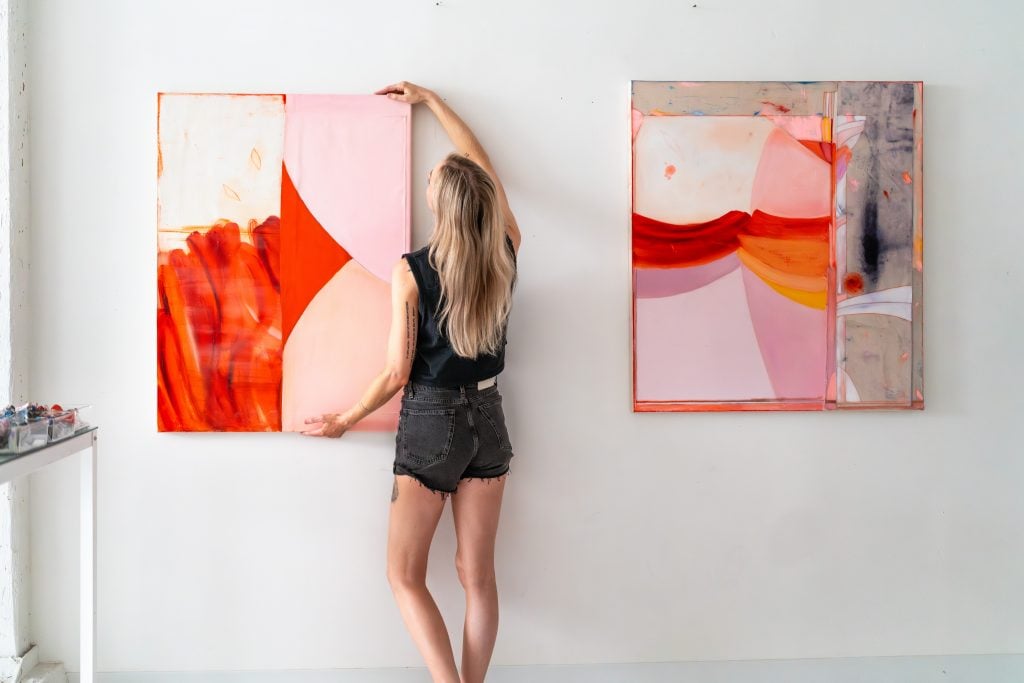
Daniel Steegmann Mangrané, Dana James, Manal Kara, Justine Hill, and more.

Annikka Olsen

There is nothing better than a crisp autumn day for gallery hopping and, luckily, New York’s gallery shows are changing as fast as the weather. We’ve surveyed the solo show landscape and there’s plenty to peep besides leaves this October.
From a New Zealand-born abstract painter making her debut in the Big Apple to a New York-based textile artist who felts family pictures, these 10 artists are probing personal and collective histories while pushing the boundaries of their medium.
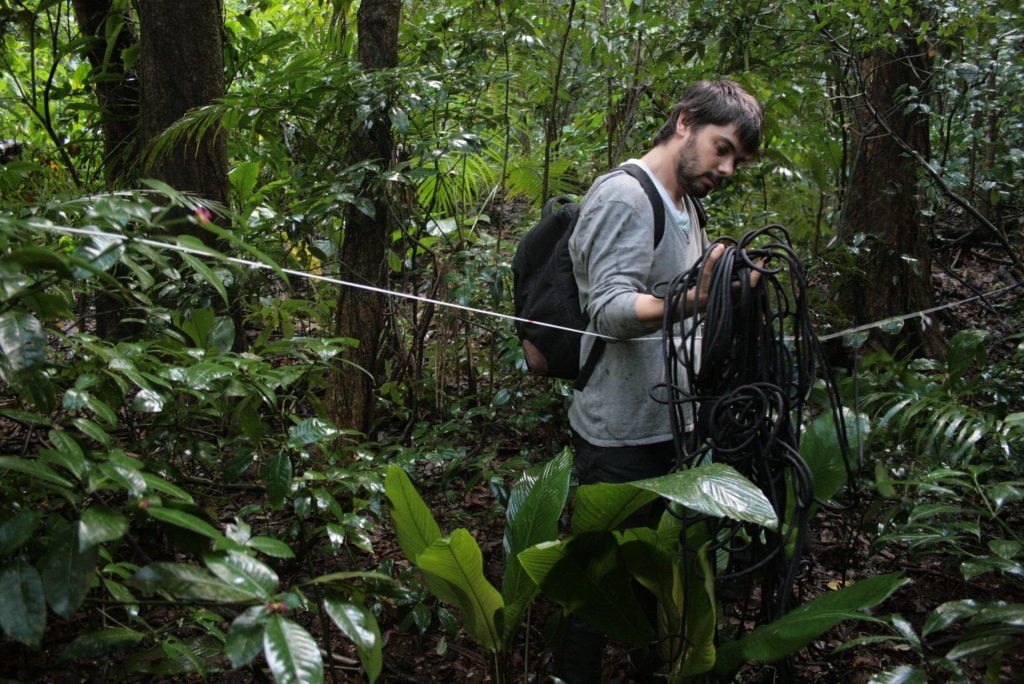
Daniel Steegman Mangrané. Photo: Amilcar Packer. Courtesy of Mendes Wood DM.
Daniel Steegman Mangrané creates conceptual works that explore the organic versus the built environment. These can range from small plants cradled in fragile, handblown vases shaped like branches, to large-scale installations and films. The artist, who works between his native Barcelona and Rio de Janeiro, returns often to Brazil’s Tijuca National Park—an urban jungle preserve on the outskirts of Rio de Janeiro—as a recurring source of inspiration. His work La Pensée férale, from which his show at Mendes Wood DM takes its name, is comprised of seven photographs depicting the eye of a dog variously placed within the landscape of the park. The accompanying text, written by his collaborator on the project, Brazilian philosopher Juliana Fausto, describes the reforestation of the land in 1861 through enslaved labor and the current stray dog epidemic that disrupts its ecosystem.
Alongside other signature works from the artist’s oeuvre, such as leaves that have been meticulously etched and “breathing lines,” threads of LED lights hung from floor to ceiling that react to local weather and sounds, the show offers visitors a comprehensive look into Mangrané’s poetic and wide-ranging practice. Currently the subject of a traveling solo museum exhibition, “A Leaf Shapes the Eye,” which will open at the Museum of Contemporary Art of Barcelona (MACBA) in November, Mangrané’s show with Mendes Wood DM marks his solo debut in New York City.
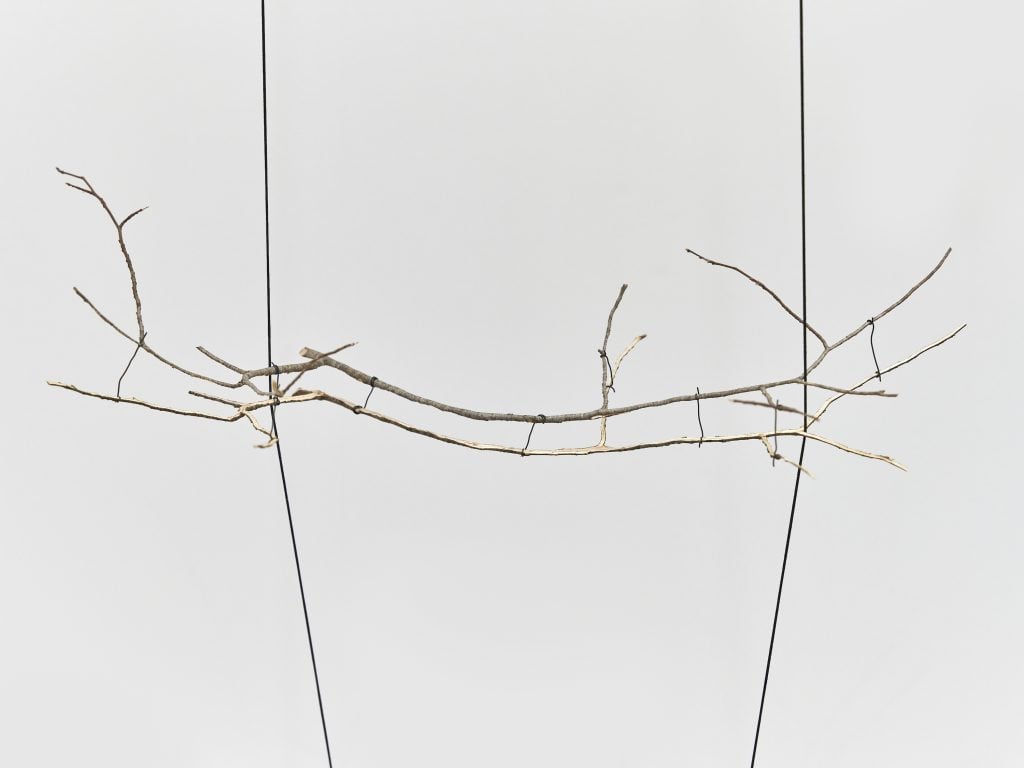
Daniel Steegmann Mangrané, Geometric Nature / Biology (2023). Courtesy of the artist and Mendes Wood DM, Såo Paulo, Brussels, New York.
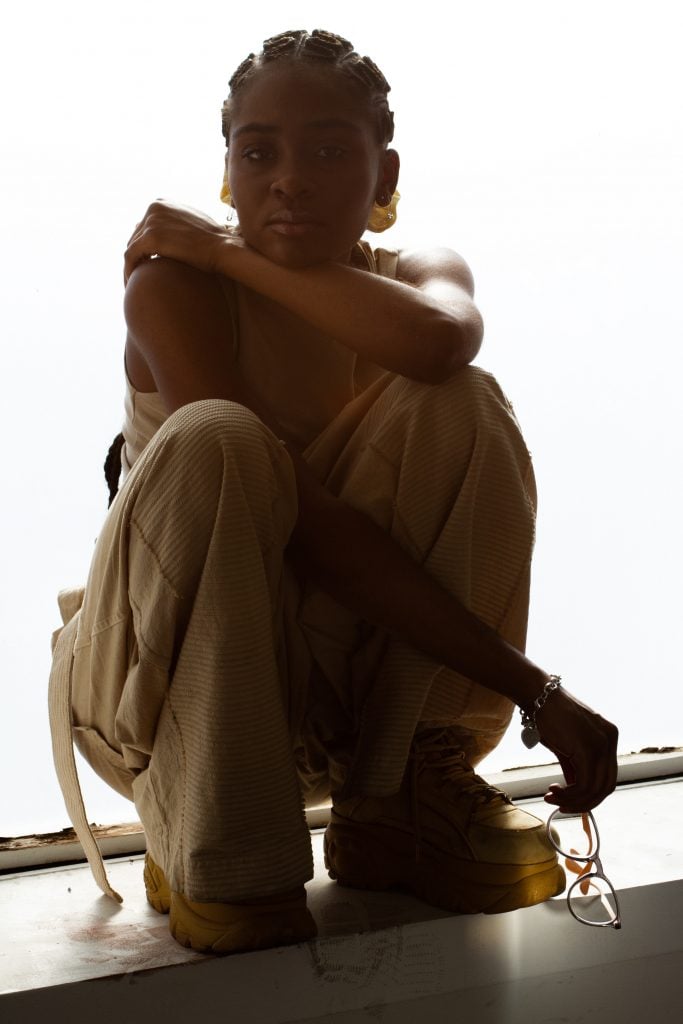
Sydney Vernon. Photo: Daniel Diasgranados. Courtesy of the artist and Kapp Kapp.
Synthesizing family photos with elements of folklore and various histories—personal, collective, and imagined—Sydney Vernon creates nuanced interpretations and critiques of Black representation. The Baltimore-based artist graduated with her B.F.A. from the Cooper Union in 2021 and joined the roster of Kapp Kapp earlier this year. This is her inaugural solo exhibition with the gallery, and her second in the city overall.
Marking her first major body of work since 2020, the self-titled presentation features new works on paper completed in colored pencil, pastel, and ink. Featuring composite portraits and vintage photographs of her family that are integrated with her own imagined architectures and backgrounds, as well as elements from film stills or magazine spreads, Vernon’s disjointed visual perspectives and gestural rendering evoke a sense of magical realism. Her use of formats like diptychs, like those commonly used by Lorraine O’Grady, whom Vernon cites as an influence in her work, suggest truth can be both personal and historical.
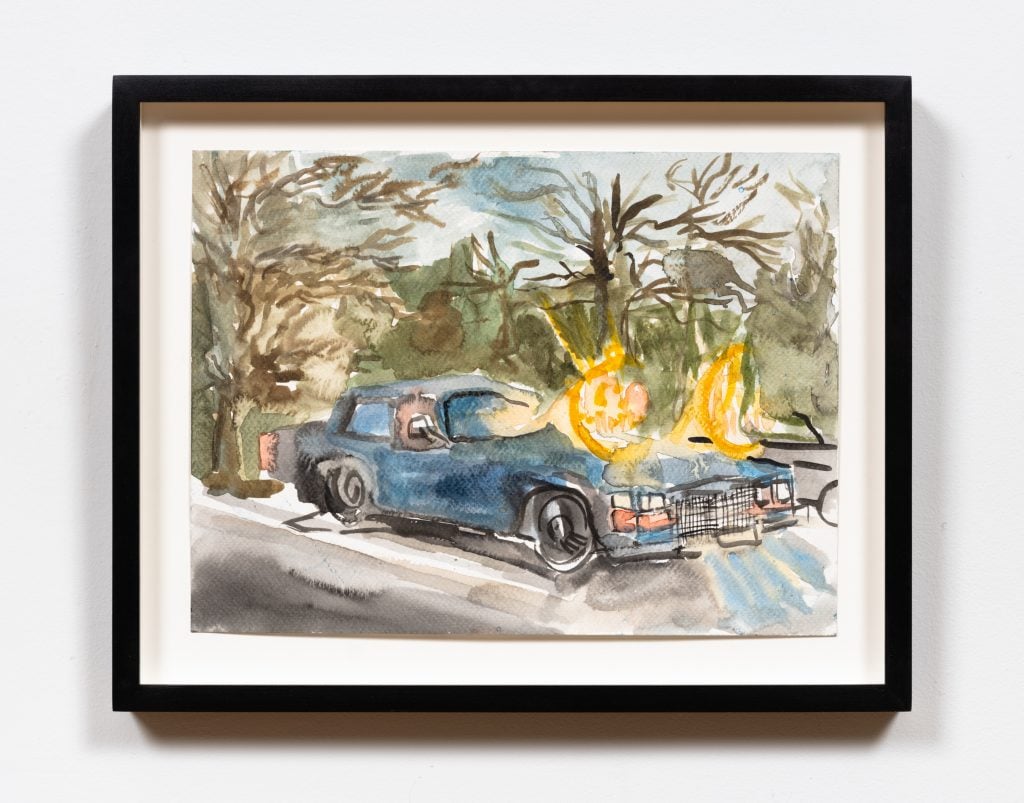
Sydney Vernon, Chandelier headlights (2023). Courtesy of the artist and Kapp Kapp.
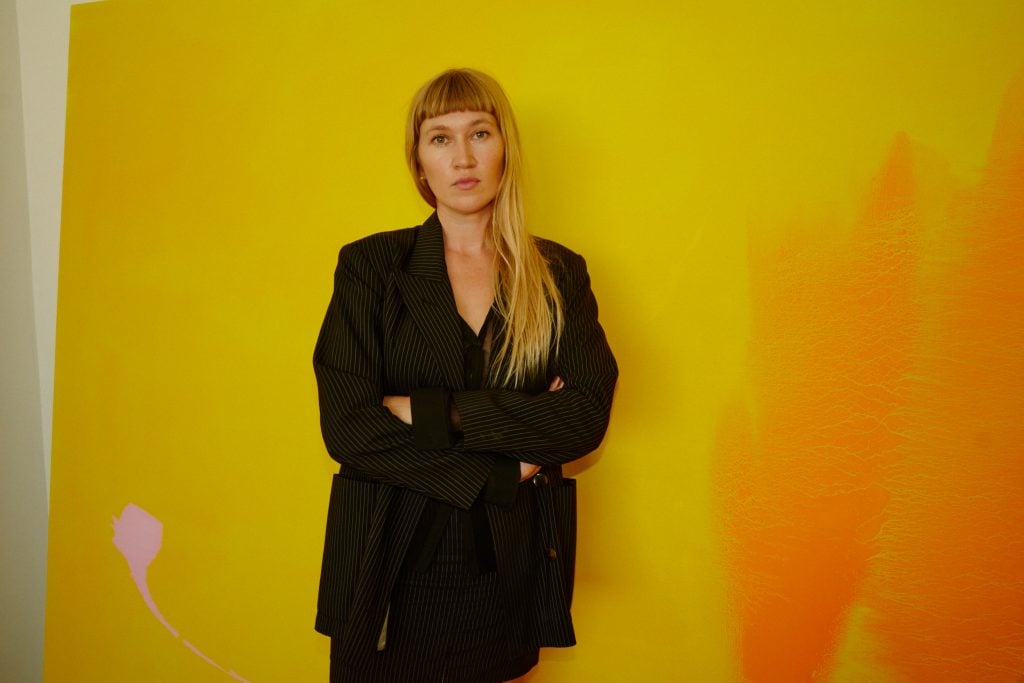
Emma McIntyre. Photo: Brad Torchia. Courtesy of the artist.
New Zealand-born, Los Angeles-based artist Emma McIntyre’s practice toes the line between spontaneous and strategic in her work, exploring the ever-expanding possibilities of painting. The artist first applies her pigment by pouring it across the support, letting it variously pool and spill across the canvas. Once reoriented, McIntyre uses everything from rags to her own body to modify the work, drawing from art history and a lexicon of compositional tactics therein to variously guide her interventions.
McIntyre has had solo shows in Auckland, New Zealand, Los Angeles and Paris, but her current exhibition at David Zwirner’s East 69th Street location marks her solo debut in New York City. Among the works included are a handful of canvases that feature her use of a new process in which she creates a chemical solution that oxidizes when poured over iron pigment.
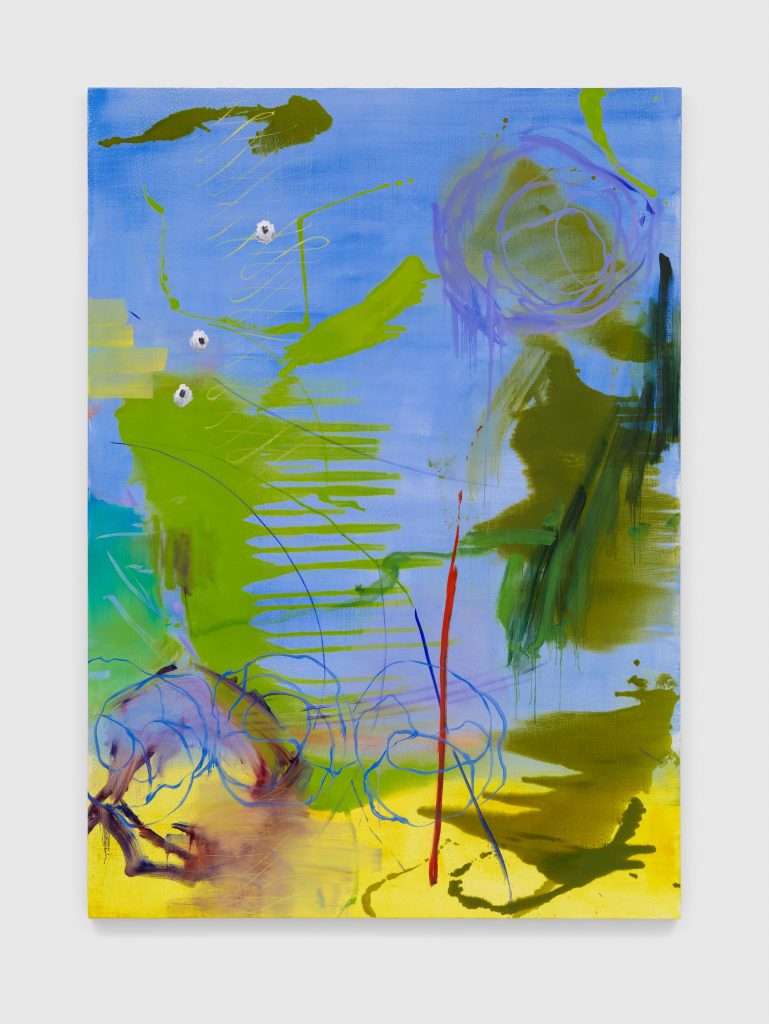
Emma McIntyre, Queen of the air (2023). © Emma McIntyre. Courtesy of the artist, Château Shatto, Los Angeles, and David Zwirner, New York.
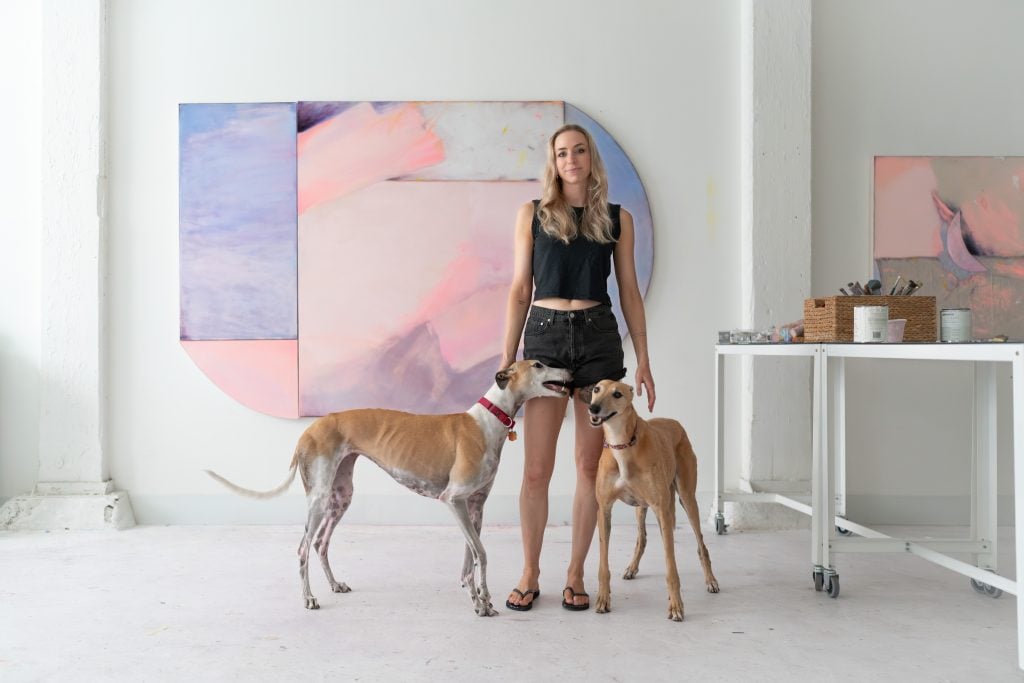
Dana James with her dogs. Photo: James Collins. Courtesy of the artist and Hollis Taggart.
Based in Ridgewood, New York, Dana James believes that materials can “transcend their nature” and their seeming oppositions—such as opaque and sheer, geometric and organic, light and shadow—can create harmony. The subtle radiance of James’s fields of color, executed in a signature palette of tonal and tinted pastels, recall the work of Abstract Expressionists Helen Frankenthaler or Richard Diebenkorn. In conjunction with the use of shaped canvases, and the inclusion of unorthodox materials like flecks of tin foil, each of James’s paintings illustrate the artist’s ongoing exploration of the inherent dualities and contradictions within visual experience.
A graduate of the School of Visual Arts, James was named one of the top artists of the decade by Daily Collector in 2020. James’s forthcoming exhibition with Hollis Taggart is her second with the gallery and will feature recent work that promises to be her most ambitious to date in terms of scale and complexity.
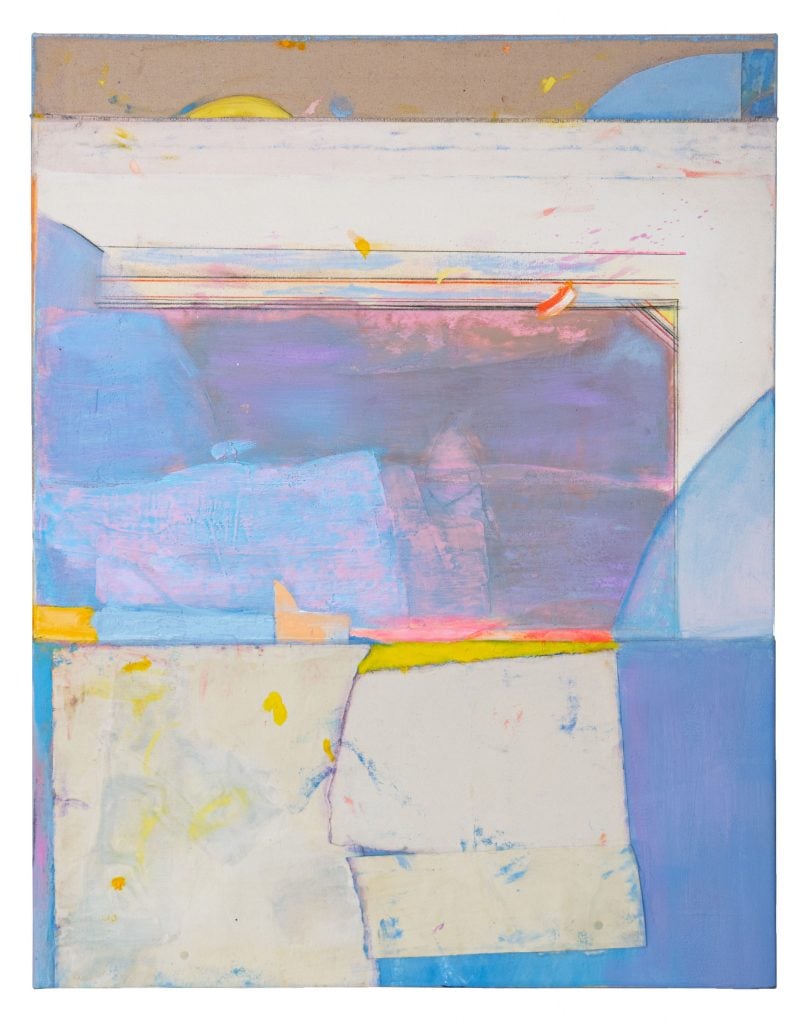
Dana James, The Pearl Notebook (2023). Courtesy of the artist and Hollis Taggart.
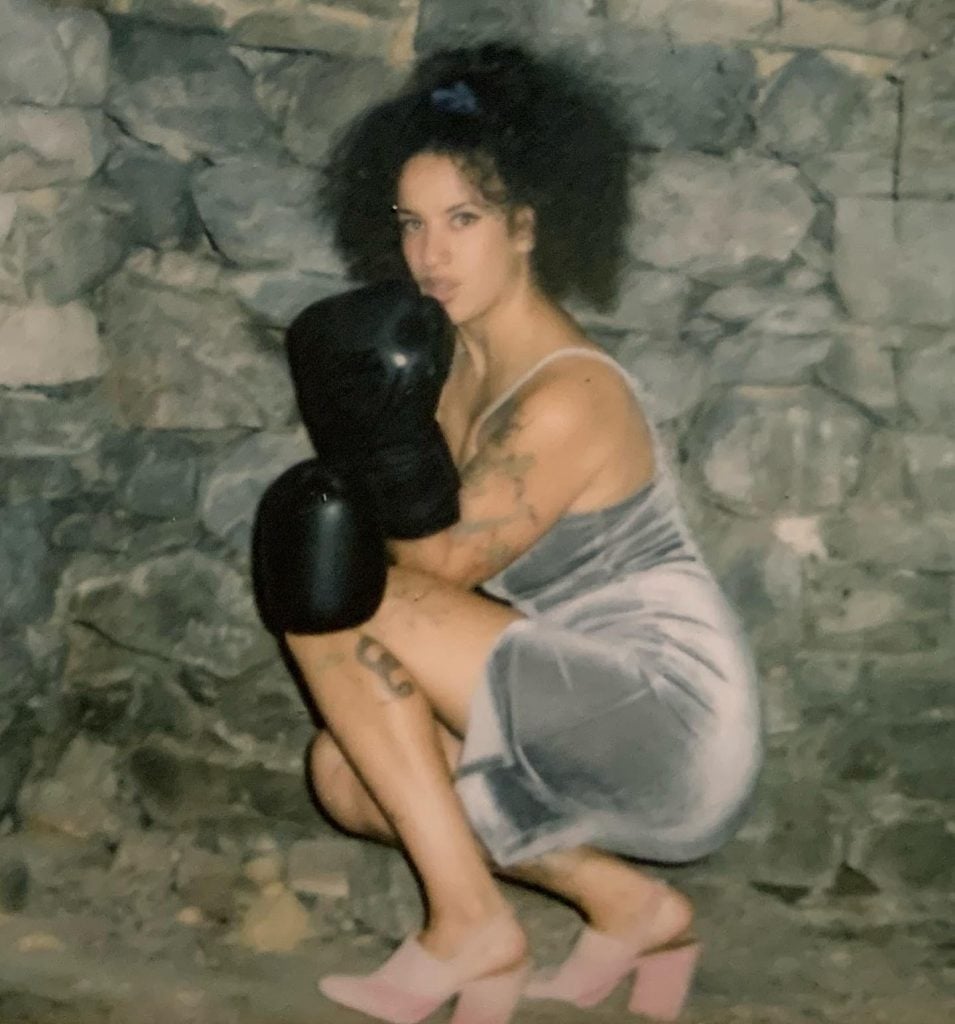
Manal Kara. Courtesy of the artist and Deli Gallery.
Moroccan-American poet and self-taught artist Manal Kara uses an intriguing array of media in their work. From organic material such as tree bark and bumble bees, to found objects like hand tools, Kara’s work brings to mind Clement Greenberg’s idea of medium specificity. This concept plays an influential role in the themes explored in the artist’s work, which frequently investigates ideas around place and anthropocentrism. Viewer participation is often a crucial part of their works, which alludes to themes of collectivism and humanity’s connection with each other and the world around them.
Kara’s work has been shown widely both nationally and internationally, with recent solo shows at Pangée, Montreal, and Shulamit Nazarian, Los Angeles. “Sacred Topologies” at Deli Gallery is their first show with the gallery and features the artist’s most recent body of work.

Manal Kara, Physical Symbol System (illuminated manuscript 2) (2023). Courtesy of the artist and Deli Gallery.
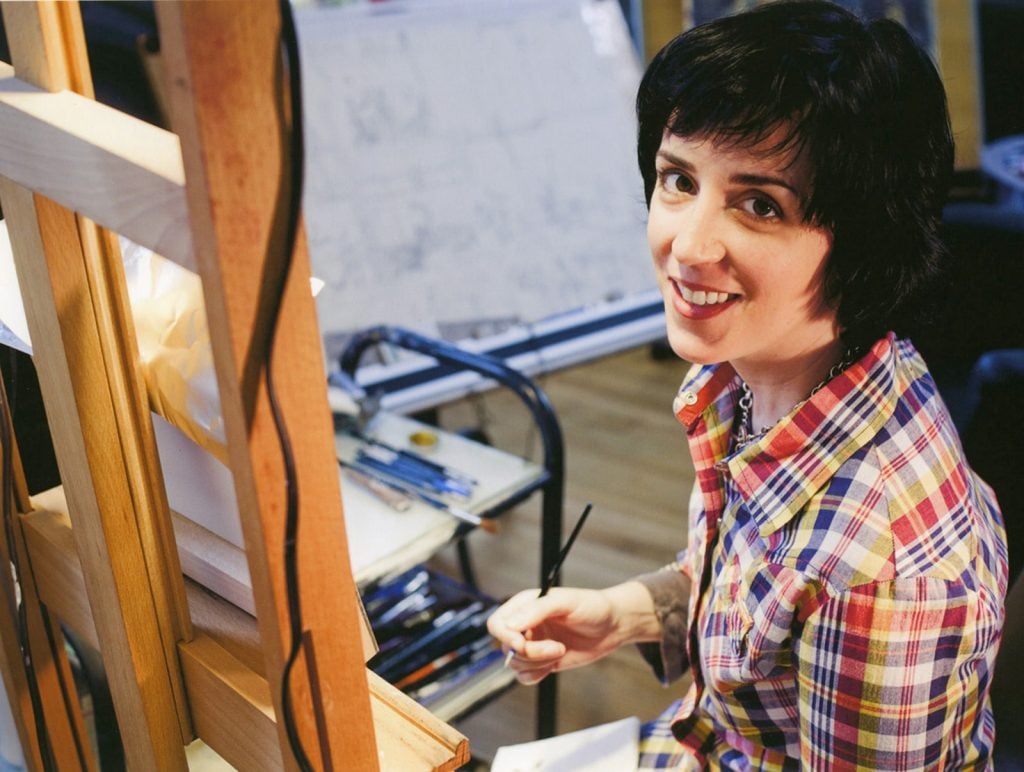
Hilary Harkness. Photo: Christ Sanders. Courtesy of the artist and P.P.O.W.
Artist Hilary Harkness is known for her use of Old Master painting techniques combined with decidedly contemporary themes. Her intricate and meticulously rendered paintings explore ideas around gender, race, class, and power dynamics from an intersectional standpoint. The artist was represented by Mary Boone Gallery until 2019, when she joined P.P.O.W. “Prisoners from the Front” is her first solo show with gallery.
For her P.P.O.W. debut, Harkness took Winslow Homer’s 1866 Civil War painting Prisoners from the Front as a starting point for a new group of works titled “The Arabella Freeman Series.” The resulting scenes entangle Civil War history and the ancestral history of her wife Ara’s family as a means of the interrogating omissions in the historical record about queer lives and the lives of free African Americans. This collection of paintings is juxtaposed within the show with a selection of works from the series “At Home, At War: Life with Alice and Gertrude” (2007–2016), highlighting the artist’s dynamic range as she depicts imagined scenes from the life of the historically influential lesbian couple Alice B. Toklas and Gertrude Stein.
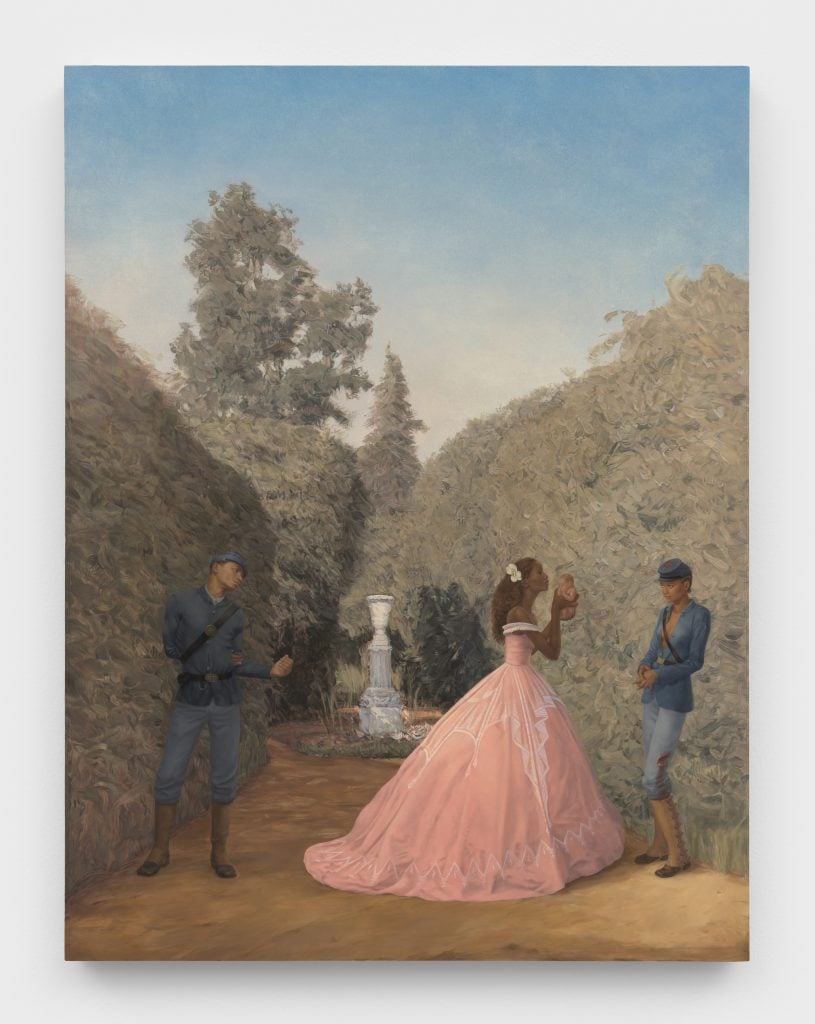
Hilary Harkness, Heaven (2020). Courtesy of the artist and P.P.O.W.
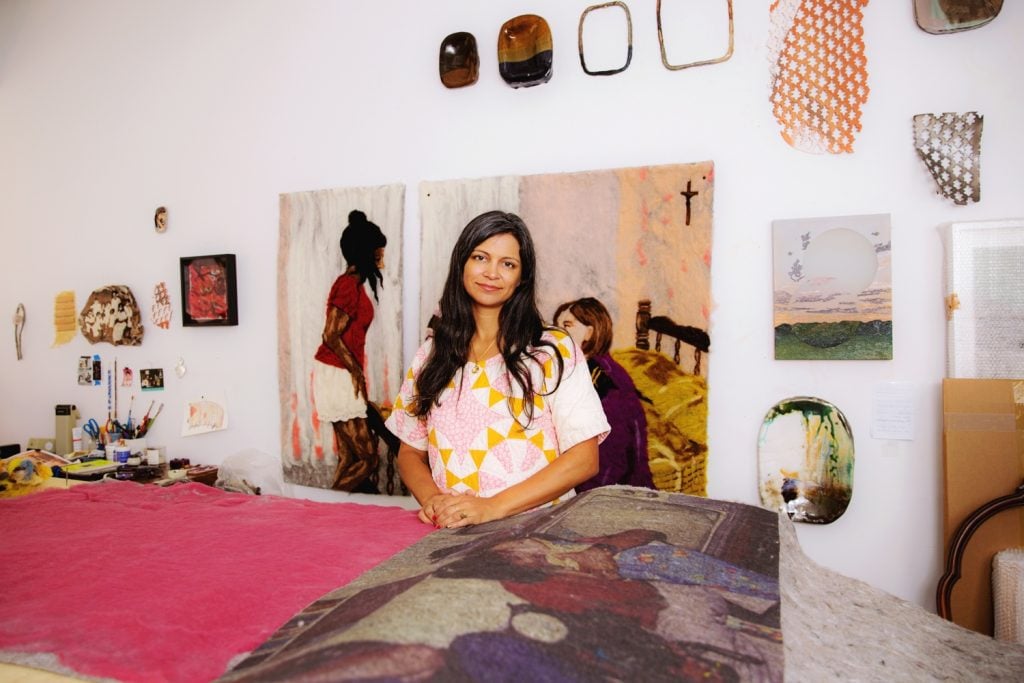
Melissa Joseph. Photo: Mary Kang. Courtesy of the artist and Margot Samel.
Originally from rural Pennsylvania, New York-based multidisciplinary artist Melissa Joseph initially worked as a textile designer and arts educator for more than a decade before receiving her M.F.A. from the Pennsylvania Academy of Fine Arts in 2018. Drawing on her experience as an Indian American, Joseph’s practice investigates how people who identify as women of color are able to move through the world and occupy space.
Joseph’s practice is situated at the intersection of painting, textiles, and other crafts like ceramics, bringing forth conversations surrounding gender and labor. Frequently employing images from family photos, her work considers diasporic life, belonging, and the malleability of identity from both a deeply personal yet widely relatable perspective. For her show at Margot Samel—her first with the gallery—she translates archival and recent family photos into large felt works, resulting in fuzzy yet recognizable scenes that seem slightly out of focus.
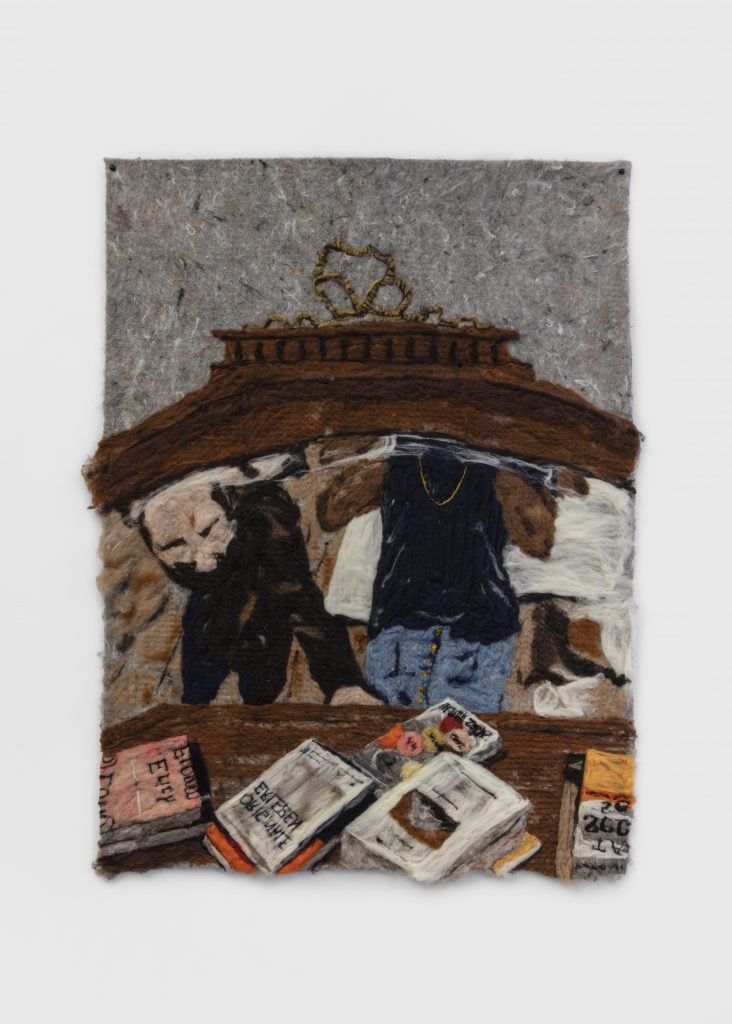
Melissa Joseph, A bow for Angelik (2023). Courtesy of the artist and Margot Samel.
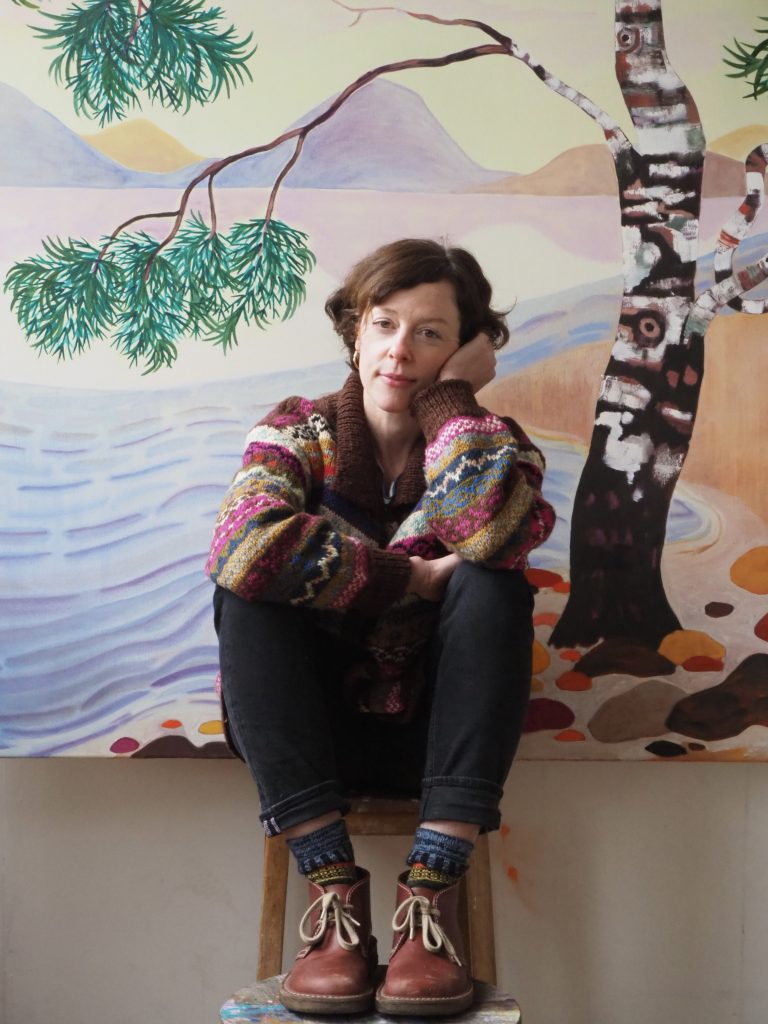
Freya Douglas-Morris. Photo: Isabella Sanai. Courtesy of the artist and Alexander Berggruen.
British artist Freya Douglas-Morris crafts vibrant, dreamlike landscapes and spaces drawn from the artist’s memories and imagination. The artist’s figuration recalls the work of Milton Avery, while the organic line and shape of the paintings can be seen as a contemporary adaptation of 19th aesthetics like Art Nouveau or Arts and Crafts. Her bold and decisive color schemes and flowing brushstrokes of each painting lend them a contemplative, meditative air that invite prolonged looking.
Douglas-Morris graduated from Brighton University with her B.F.A. in 2002, and the Royal College of Art, London, in 2013. Though her work has been represented previously in group shows with Alexander Berggruen, this will be Douglas-Morris’s first solo with the gallery, as well as in the U.S. The exhibition will coincide with a publication, produced by Hurtwood Press Limited, London, in association with Alexander Berggruen, as part of the Hurtwood Contemporary Artist Series.
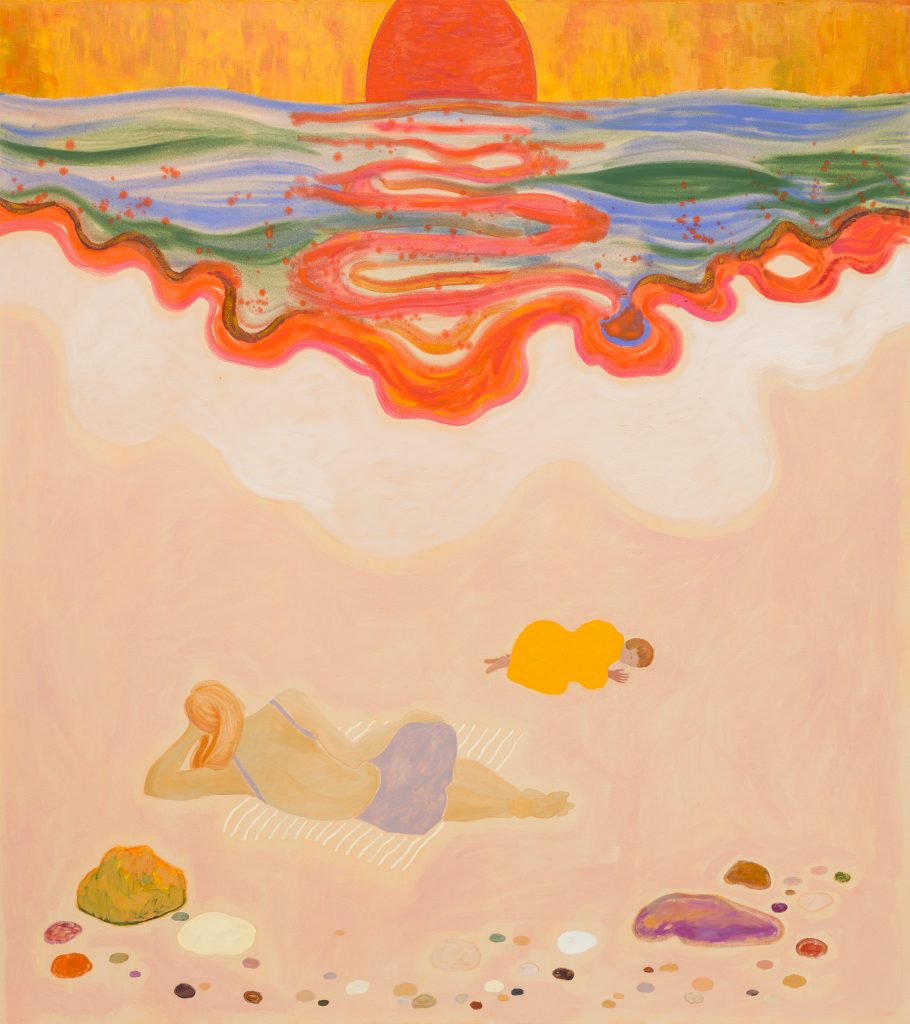
Freya Douglas-Morris, Mother and child beach scene (2023). Photo: Mark Blower. © Freya Douglas-Morris. Courtesy of the artist and Alexander Berggruen.
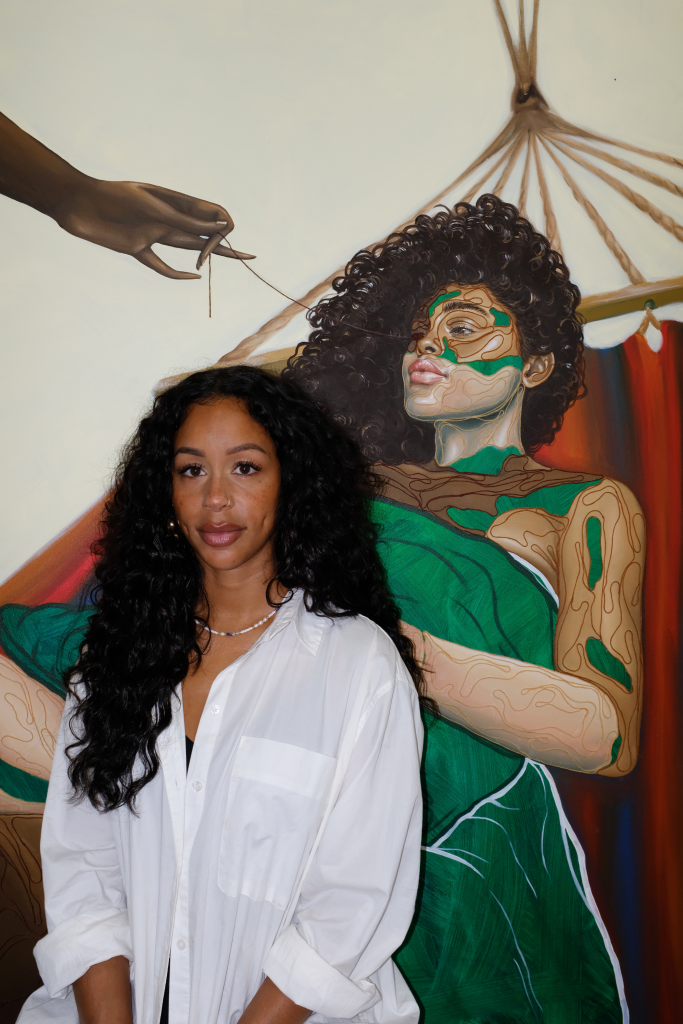
Rugiyatou Jallow. Courtesy of the artist and Albertz Benda.
Swedish-born, Los Angeles-based artist Rugiyatou Jallow frequently centers her compositions on a single female figure and subsequently engages with pervasive ideas around the representation of women. The artist hails from a matrilineal line of artists, as Jallow’s mother and grandmother were both painters, and passed the love of the medium on to her. She studied computer animation at Glendale College in Los Angeles and the influence of this background can be seen in her graphic line work and dynamic approach to composition.
Jallow’s solo exhibition with Albertz Benda will showcase new works that continue her investigation into depictions of women like her, who identify with more than one race and have difficulty fitting into either community. The recent works also mark an evolution in the artist’s practice by way of technique. In her earlier work she was preoccupied with focusing on her figure’s hands; here, she draws focus on the figure’s gaze, lending them a sense of autonomy and authority.
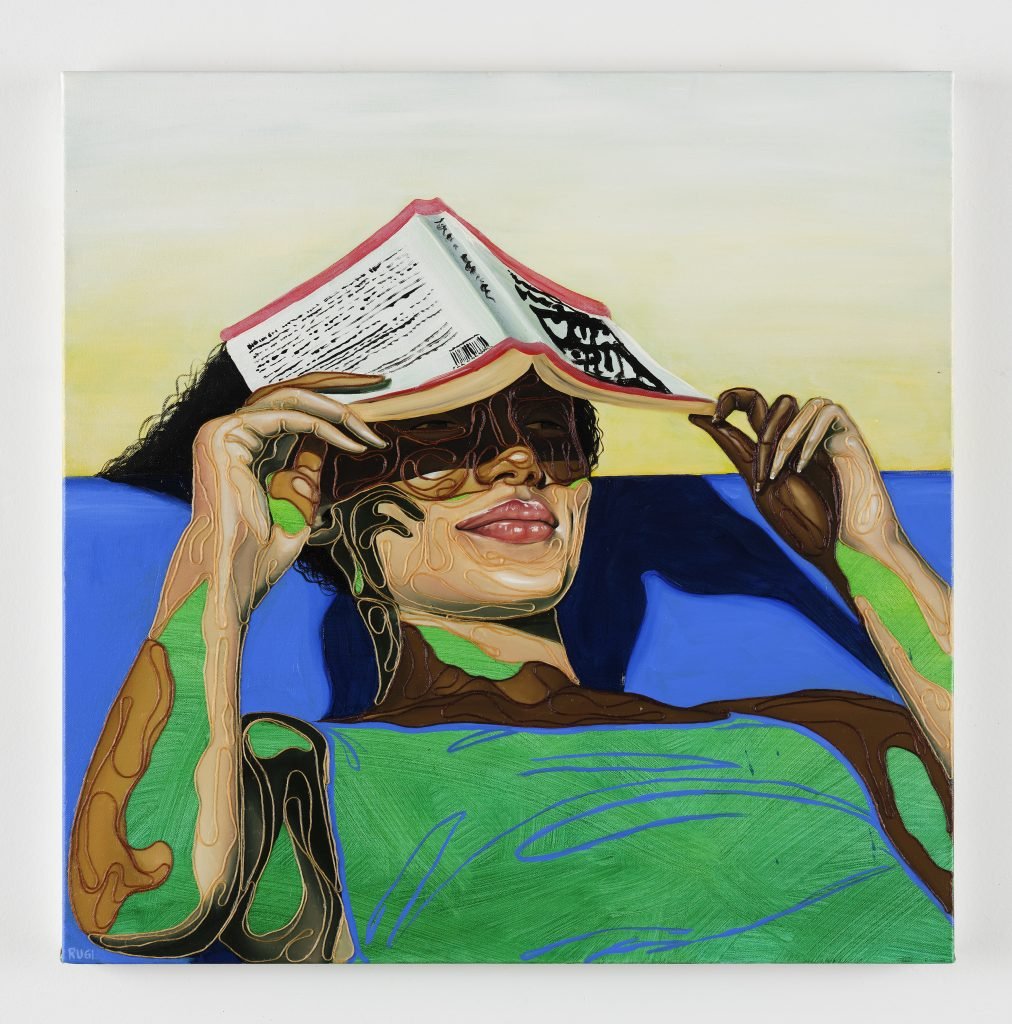
Rugiyatou Jallow, Chapter 2 (2023). Photo: Julian Calero. Courtesy of the artist and Carl Kostyal Gallery; Albertz Benda, New York, Los Angeles.
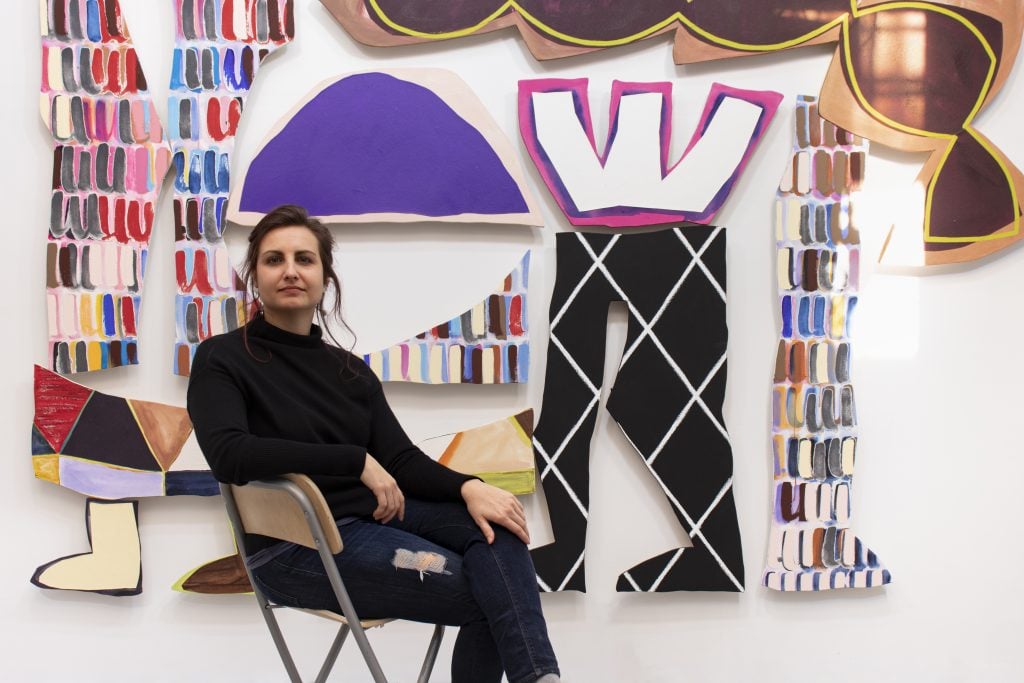
Justine Hill. Courtesy of the artist and Dimin.
In a suite of new works for Dimin, Justine Hill employs her signature, idiosyncratically shaped paintings to further her investigations into human form, scale, and narrative, tapping into themes from mythology, folklore, as well as contemporary literature. The show’s title Omphalos, means “navel of the earth” in Greek mythology and Hill has borrowed science fiction author Ted Chiang’s use of this word for her own work, citing his short story of the same name that asks: which better exhibits proof of a creator, a navel or no navel? Hill has progressively incorporated more appendages and constructed increasingly figurative supports in her sculptural paintings, and her recent body of work is the most humanoid yet.
Based in New York City, Hill recently concluded an Elizabeth Murray Art Residency by Collar Works in upstate New York. Last year, she was the subject of a solo show at Maki Gallery, Tokyo, and completed a large-scale commission for the College of the Holy Cross—Hill’s alma mater, where she received her B.A. in 2008—which was on view through July of this year.
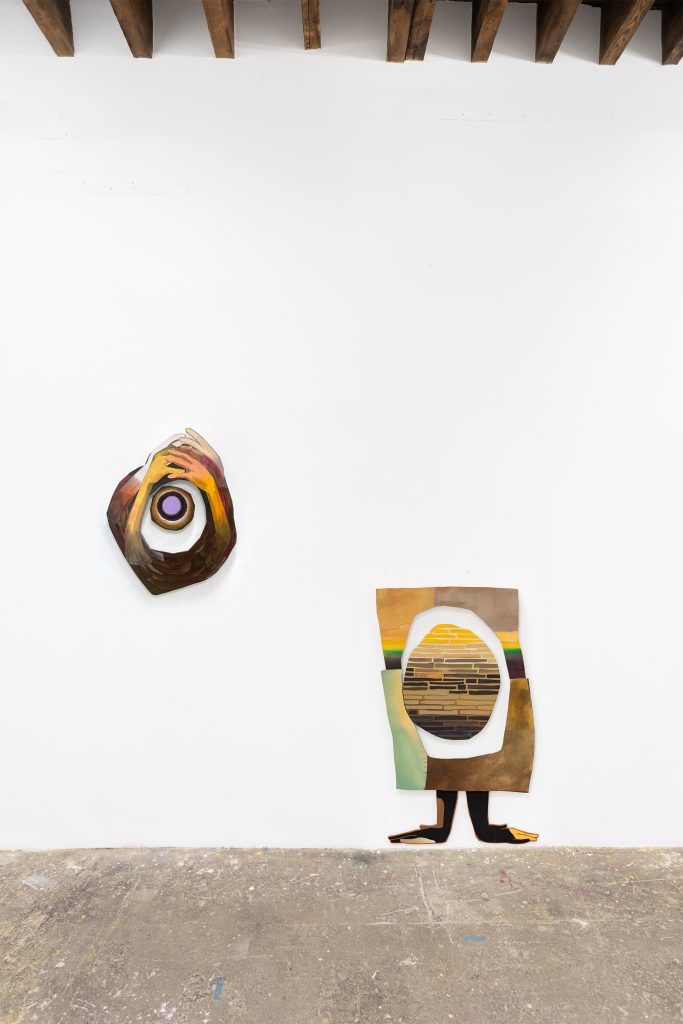
Justine Hill, Bust 3 (Hide) (2023). Courtesy of the artist and Dimin.